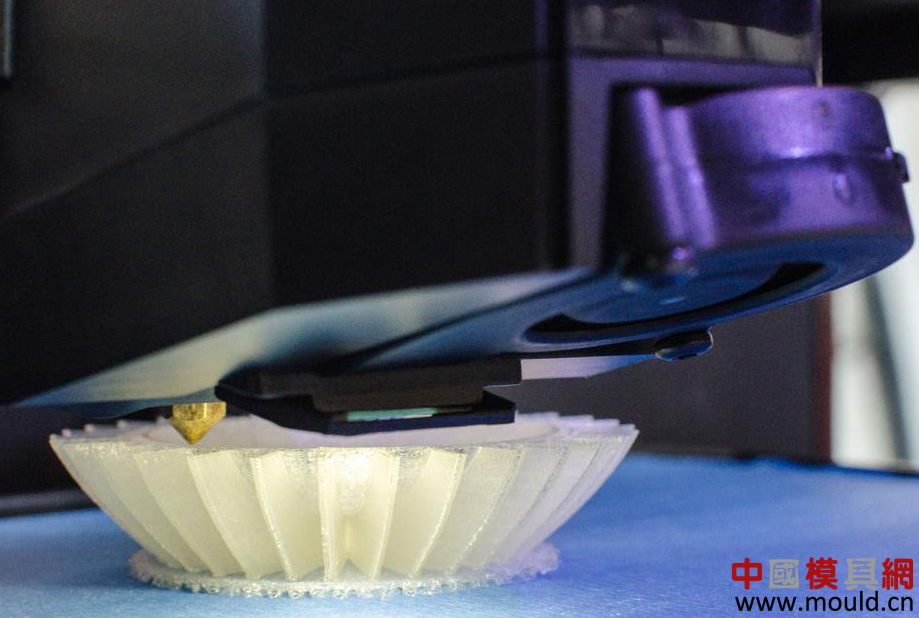
The rapid development of 3D printing technology has caused some impact on some traditional industries. With the updated iterations of 3D printing technology, this impact will become more profound.
3D printing technology is a kind of rapid prototyping technology. It decomposes the three-dimensional digital model designed by computer into several plane slices, and then the powder, liquid or filament plastic, metal, ceramic or sand can be stuck by a 3D printer. Composite materials layer by layer, superimposed on each other, and eventually stacked into a complete object. This technology integrates cutting-edge technical knowledge in many aspects such as digital modeling technology, information technology, electromechanical control technology, materials science and chemistry, etc. It is a comprehensive application technology with high technology content.
3D printing technology can realize large-scale and personalized production and can create shapes that traditional production technologies cannot produce. And can achieve the first form of net shape, greatly reducing the amount of post-secondary processing, to avoid the outsourcing of data leakage and time span. In addition, due to the drastic reduction in the time required for its manufacturing preparation and data conversion, the cycle and cost of single-piece trial production and small batch production are reduced, which is particularly suitable for the development of new products and the production of single-piece and small-volume parts. These advantages have made 3D printing a trend and have been widely used in many fields such as architecture, industrial design, jewelry, footwear, model manufacturing, automotive, aerospace, medical, education, and geographic information systems. This technology will bring about a major change in the global manufacturing economy. It will also be an important symbol of digital manufacturing in the third industrial revolution. The 3D printing industry will become the next sunrise industry with broad prospects.
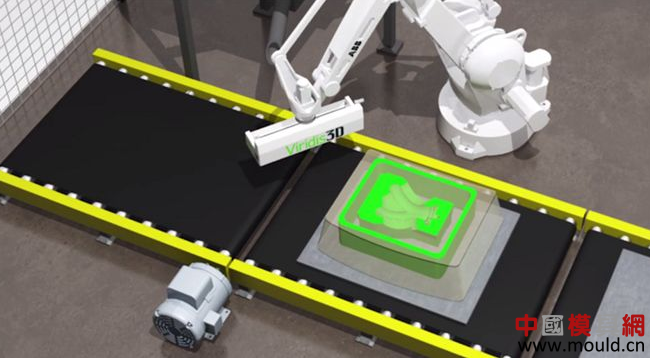
Technical Principles and Steps of 3D Printing
The 3D printing technology is based on a computer three-dimensional design model, and discretely decomposes it into several layers of plane slices with software. Then the powder, liquid or filamentous metal, ceramics, and the like are used by a numerical control forming system using a laser beam, a hot melt nozzle, or the like. Plastics, cell tissues and other materials are layered and cemented layer by layer, and finally they are overlaid to form a solid product. 3D printer is the core equipment of 3D printing. It is a complex mechatronics system integrating machinery, control and computer technology. It is mainly composed of high-precision mechanical system, numerical control system, injection system and forming environment. Contrary to the "manufacture of materials" technology in traditional manufacturing, 3D printing complies with the principle of "adding layers one by one", which eliminates the need for traditional tools, fixtures, and machine tools. The production cost and the shortening of the processing cycle have increased the utilization of raw materials and energy, reduced the impact on the environment, and enabled the design and manufacture of products with complex structures. The density of molded products has also become more uniform.
step
The assistant designer uses the computer modeling software to create a three-dimensional digital model of the product, and automatically analyzes the printing process according to the model. After pressing the "Print" button, the 3D printer can print them out. The principle of 3D printing is the same as traditional printing, except that the printing materials used are different. Traditional printing uses “inkâ€, and the raw materials used for 3D printing must be liquefiable, powdered, and silked plastics, metals, Ceramics or sand, etc., can be recombined after printing, and have qualified physical and chemical properties.
Three-dimensional design
The design process of three-dimensional printing is: firstly modeling by computer modeling software, and then “partitioning†the built three-dimensional model into a layer-by-layer cross section, ie, slicing, so as to guide the printer to print layer by layer. 3D design software is the source of data for 3D printing. The 3D printing model is created by 3D design software. Domestic 3D design software includes CAD, Zhongwang 3D, and CAXA. Although there are a lot of dedicated software for 3D printing, more intuitive, simple and practical 3D printing software has yet to be developed.

Slice processing
3D printing, like laser forming technology, uses layered processing and superposition molding to complete 3D solid printing. The printing process of each layer is divided into two steps [3]. First, the printer reads the cross-section information in the file and sprays a layer of special glue on the area to be formed. The glue droplet itself is small and does not easily spread. A uniform layer of powder is then sprayed on the powder. The powder will quickly solidify and adhere to the glue, and the areas without glue remain loose. In this way, the solid model will be “printed†under the alternation of a layer of glue with a layer of glue. After the printing is completed, the model can be “planned†as long as the loose powder is removed, and the remaining powder can be recycled.
Finish printing
The resolution of the 3D printer is sufficient for most applications, but it may be rough on a curved surface. Like the jaggies on an image, items with higher resolution can be printed on the current 3D printer first. The object is then slightly ground to obtain a smooth surface "high resolution" item.
Common Materials for 3D Printing and Main Techniques Common Materials for 3D Printing
Full color plaster material
The material itself is a gypsum-based powder that is bonded together with an adhesive and embedded with an inkjet head. The product printed with this material is hard and brittle, but it is the only material that can print full-color [4]. The printed sample is bright and vivid.
Engineering plastics
Engineering plastics are industrial plastics that are used as industrial parts or housing materials. They are plastics that are excellent in strength, impact resistance, heat resistance, hardness, and aging resistance. There are three main types.
PC material
It is a true thermoplastic material with all the features of engineering plastics. High strength, high temperature resistance, impact resistance, bending resistance, can be used as the final parts, used in the transportation and home appliance industries.

PC-ISO material
It is a kind of thermoplastic material certified by medical hygiene. It is widely used in the pharmaceutical and medical device industry. It can be used in surgical simulation, skull repair, dental and other professional fields.
PC-ABS material
It is one of the most widely used thermoplastic engineering plastics used in the automotive, home appliance and communications industries.
3D printing photosensitive resin
Consists of a polymer monomer and a prepolymer in which a light (ultraviolet light) initiator (or photosensitizer) is added. The polymerization is completed immediately after irradiation with a certain wavelength of ultraviolet light (250-300 nm), and is generally liquid. Generally used for making high-strength, high-temperature, waterproof materials. There are three main types.
Somos19120 material
It is pink material, casting special materials. Direct replacement of precision cast wax film prototypes after molding eliminates the risk of mold opening and greatly reduces cycle time. Has low ash and high precision characteristics.
Somos11122 material
It is translucent material, class ABS material. After polishing can be made almost transparent artistic effect. This material is widely used in medical research, handicraft production and industrial design and other industries.
SomosNext materials
It is a white material, PC-like new material, material toughness, accuracy and surface quality is better, the components produced have the most advanced combination of rigidity and toughness.
The commonly used materials for 3D printing include nylon materials, metal materials, wax materials, rubber materials, and biological materials.
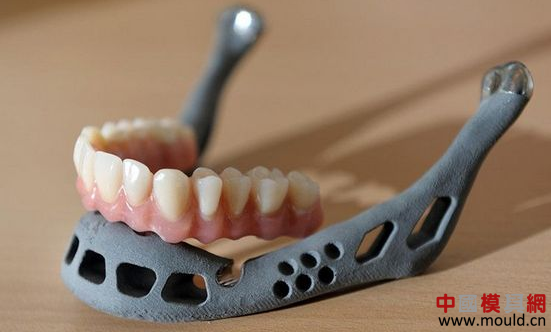
The main technology of 3D printing SLA stereolithography molding technology
The principle of this technology is to use the "light" of a specific wavelength and intensity to focus on the surface of the "photocurable material" to complete the patterning of a single layer of material. The material used is a liquid photosensitive resin. The feature is that the forming speed is faster, the precision is relatively high, and the profile surface is very good. Mainly used to make a variety of molds and models.
FDM volume forming technology
The principle is that the filamentous material is melted into a liquid by the extrusion head of the heater, the micro-spray head is moved in the xy plane, the molten material is coated on the formed “workâ€, and a layer of graphics is completed after cooling. The materials used are filamentous materials (paraffin, metal, engineering plastics, low melting alloy wire). Features are simple to use, easy to maintain, low cost, fast speed, and complex prototypes take only a few hours to shape. Mainly used for Plastic Parts, wax castings, prototypes or models.
LOM layered entity manufacturing technology
The principle is that the laser cutting system uses the cross-sectional contour data extracted by the computer to cut the inside and outside contours of the workpiece by laser with a thin material coated with hot-melt adhesive on the back side. After cutting a layer, the feeding mechanism stacks a new layer of paper. Going up, the cut layer is bonded together using an adhesive pressing device. The materials used are paper, metal foils, plastic films, ceramic films, and fiber paper coated with thermal glue. It is characterized by reliable work, good model support, low cost, and high efficiency. It is mainly used for rapid manufacturing of new product samples, models or wood molds for casting.
3DP three-dimensional powder bonding technology
The principle is to first spread a layer of powder, then use the nozzle to spray the adhesive in the area to be formed, so that the material powder is bonded to form the cross section of the part, and then the process of powder coating, spraying and bonding is repeated continuously, and the layers are superimposed. Get the final part. The materials used are powder materials such as ceramic powders, metal powders, plastic powders and the like. The feature is high forming speed, no support structure, and the ability to output color printing products. At present, other technologies are more difficult to achieve. Mainly used in professional areas.
SLS Selective Laser Sintering
The principle is to lay a layer of powder material first, control the laser beam to selectively sinter, make the temperature of the powder material rise to the melting point, and the sintered part is solidified to form a pattern, and then the process of powder coating and sintering is continuously repeated until the whole process is completed. Modeling. The materials used are metal powder materials (Ni-based alloy mixed copper powder, Ti, Fe, Cu powder, etc.). The product is characterized by good precision and relatively high strength. The main advantage lies in the production of finished metal products. Mainly used in high-end manufacturing.
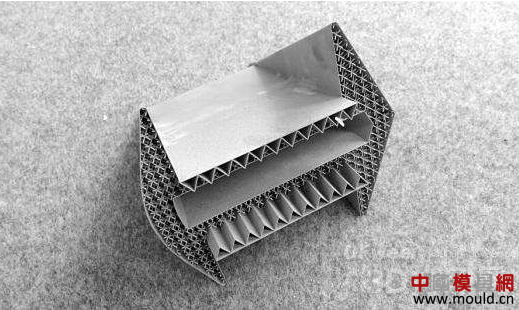
Safety hazards 3D printers are energy swallowers
According to a study by the University of Lavra shows that when the plastic melts with high temperatures and lasers, to make a model of the same quality, 3D printers consume about 50 to 100 times more energy than injection molding. In 2009, the Massachusetts Institute of Technology's environmentally-friendly manufacturing project pointed out that the power required to directly generate metal deposits (metal powders are fused together) is hundreds of times more than traditional casting methods and processing methods. Because of this, 3D printers provide better conditions for small batch production. Industrial 3D printers will not reduce our use of coal-fired energy in a short period of time.
Harmful air emissions
According to a study by Illinois Institute of Technology, when you use a 3D desktop printer at home, it may harm human health. The emission of a 3D printing desktop during operation is similar to that produced when lighting a cigarette or cooking on a gas stove or hotplate. In 2013, there was a study for the first time to measure particulate emissions from air generated by 3D desktop printers. When the plastic melts and prints small objects, 3D printers use PLA filaments to emit very fine particles at a rate of 2 billion per minute, while the use of ABS radiation particles is as fast as 20 billion per minute. These particles can be deposited in the lungs and blood vessels of the human body and affect human health, especially for people with asthma.
Dependence on plastics
An introduction to ABS and PLA materials has been published on the micro-web, both of which are commonly used materials in the 3D printing process. In history, there was a large-scale environmental protection campaign that promoted the use of recyclable materials instead of plastics, ranging from eco-friendly bags, water bottles, and household products, in order to reduce people’s dependence on plastics. The most popular and cheapest 3D printers use plastic filaments. Although, overall, the use of raw materials can reduce waste, the machine will leave unused or extra plastic material on the printer, and these plastic by-products will eventually enter the landfill. If 3D printing is ready for industrialization, byproducts or other recyclable plastic materials need to be reused.
Intellectual property and license war
In January, the 3D System received legitimate licenses from toy concessionaire Gentle Giant, such as Hobbits, Walking Dead, Harry Potter, Aliens, and Star Wars. Gartner once said that in four years their company may pay at least $100 billion to license holders or intellectual property holders. 3D printing will change the status of this enterprise market - at the same time, it will also change the supply and demand of the black market for these holding rights. The law must work hard in this respect. This potential digital plagiarism is comparable to the Internet's challenge to the copyright and trademark of the film and music industry and illegal downloading. On the micro-net, there is an article on “How 3D Printing Challenges Intellectual Propertyâ€, which discusses the impact of 3D printing on intellectual property protection.
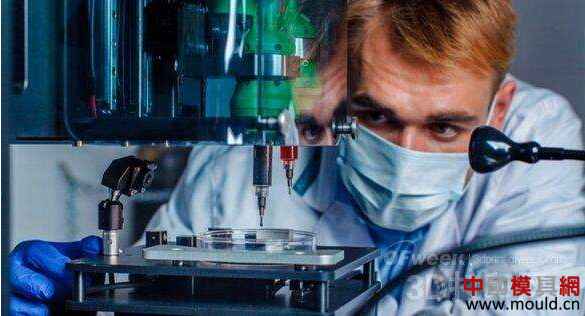
Gun Management Vulnerabilities
The first 3D gun that was successfully printed out is old news, but its influence is very important. Like today, there are many designers sharing 3D firearms on the tiny web sites that are loved and welcomed by 3D enthusiasts. Companies worldwide are constantly evolving and they all want to sell these guns or CAD designs. Solid Concepts is an engineering company that used the first 3D-printed metal pistol to fire bullets. The "undetectable firearms bill" promulgated by Congress prohibits guns that cannot be detected by metal detectors or X-ray scanners, and has been extended for another ten years. However, this puts a loophole in the gun management aspect of the law: even if the 3D printed gun contains small pieces of metal, it is not within the scope of this bill. Today, after Congress overlooked this issue for too long, legislators are trying to fix this loophole. For this reason, they made some special demands on the printing of firearms.
Manufacturer's division of responsibilities
Weapons can be printed using 3D printing technology, so some safety equipment such as helmets, bicycle wheels and children's toys can also be printed. Of course, this will involve the issue of the ownership of intellectual property rights and trademarks, but the biggest problem is the division of responsibilities. If a person uses a 3D printed gun to injure someone or kill someone, or use a 3D-printed knife to stab someone, or wear a 3D-printed helmet to hit someone's neck while riding a bicycle, then who? Should bear this responsibility
Bioprinting ethics and norms
The ethical debate on bioprinting technology has already begun. Organovo is working with the National Eye Research Center and the National Center for Advancement of Translation Science to print cells from liver cells and eye tissues. Scientists proposed mixing human stem cells with canine muscle cells to create more powerful organ tissue. Cartilage printing is currently the most practical bioprinting technology. It is still a matter of many years before it is possible to print out all the organs. However, the development and application of 3D printing in medicine is very fast. Questions about ethical, racial, and legal aspects of bioprinting are also beginning to emerge. As bioprinting becomes more common, it will inevitably lead to a war.
Possibility of 3D printing drugs
It is possible to synthesize chemical drugs using a 3D printer from a molecular perspective. A research fellow at the University of Glasgow has created a 3D “Chemputer†model that can produce drugs and drugs. He wanted to start a revolution in the pharmaceutical industry by letting patients take their own drug lists from the pharmacy and print out the drugs they need directly. Of course, this still has a long way to go, but it has made it possible to make DIY drugs and create medicines from cocaine to ricin.
Security threats to the country
The National Defense University issued a white paper stressing the threat of 3D printing technology to national security. As for the corporate sector, there are also many legal and economic issues involved and the possibility that 3D printers can print out a range of products that are still uncontrollable. This white paper also pointed out that in the near future, the issue of national security risks is absolutely to be explored and analyzed.
Food-related safety issues
You can use your MakerBot to print a fork or spoon, but if you use ABS plastic, BPA will be included. Fortunately, in order to solve this problem, people have created new filaments that can be put into the mouth, but these filaments have not yet been popularized. Many 3D printers also have the problem of bacterial growth if the cleaning is not clean. In order to make 3D printed food and kitchen utensils safer and healthier, it is necessary to develop a machine with FPA certification. People probably wouldn’t want to eat a genetically modified pizza in a toxic tray.
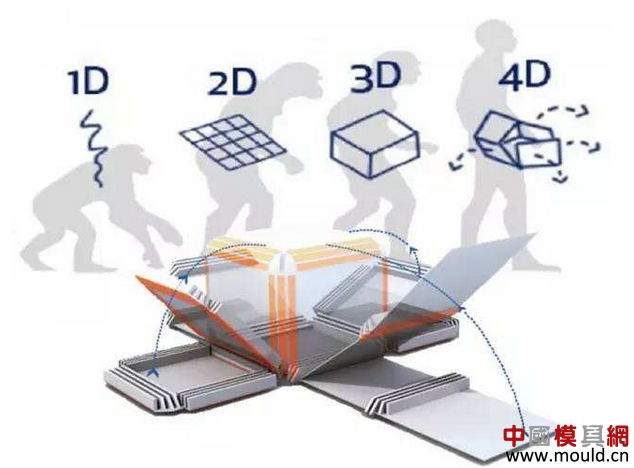
In order to make the 3D printing technology more rapid development, the state can actively support and actively guide the establishment of trade associations, encourage R&D, and strengthen education and training, and further promote the socialization of 3D printing.
Formulate digital manufacturing planning to promote the priority development of the 3D industry
It is suggested that 3D printing technology be positioned as a key technology and common technology for the production service industry, cultural and creative industries, industrial design, advanced manufacturing, e-commerce and manufacturing information engineering, and this industry be included in the priority development industry and product catalog. In fiscal and taxation financial policies, companies are encouraged to invest in, research and develop, produce and apply 3D printing, and support the import and export of 3D printing equipment.
Strengthen the construction of industrial alliances and trade associations and promote the coordinated development of 3D industries
Leading industrial design companies, 3D digital technology providers, 3D printers and materials R&D companies and institutions, and 3D printing service application providers to form industrial alliances, using related associations and associations to strengthen research and exchanges, and jointly promote the development of 3D printing technologies. Industry standard formulation. Promote the development of 3D printing technology market platform, including 3D printing e-commerce platform, 3D printing data security and property rights protection mechanism, 3D printing and peripheral project investment and financing mechanisms, etc., to promote the sustainable development of the industry.
Increase technological support and improve 3D printing technology
A special fund was set up to focus on the development of key technologies such as digital technology, software control, printing devices, and materials technology. In research and development support, attention should be paid to establishing a fair and equitable R&D performance evaluation system and encouraging various R&D entities to explore different technological paths. Strengthen the support for the cooperation of production, education and research in 3D printing, and give policy support to the enterprises that implement industrialization in market sales and social promotion.
Strengthen education and training, promote socialization of 3D printing
Incorporate 3D printing technology into the relevant discipline construction system and train 3D printing technology talents. Rely on industry associations, expos, forums and other organizational forms for 3D printing technology and peripheral application training. The 3D printing technology is displayed, promoted and promoted in public institutions such as science and technology museums, cultural and arts centers, and youth activity centers. Develop 3D printing service center, promote the application of 3D printing technology, and accumulate application experience for the development of 3D printing industry.
Silent Block, Silent Block Bushings, Silent Block Bushes
Ningbo Combine Machinery Co.,Ltd. , http://www.combine-harvester-parts.com